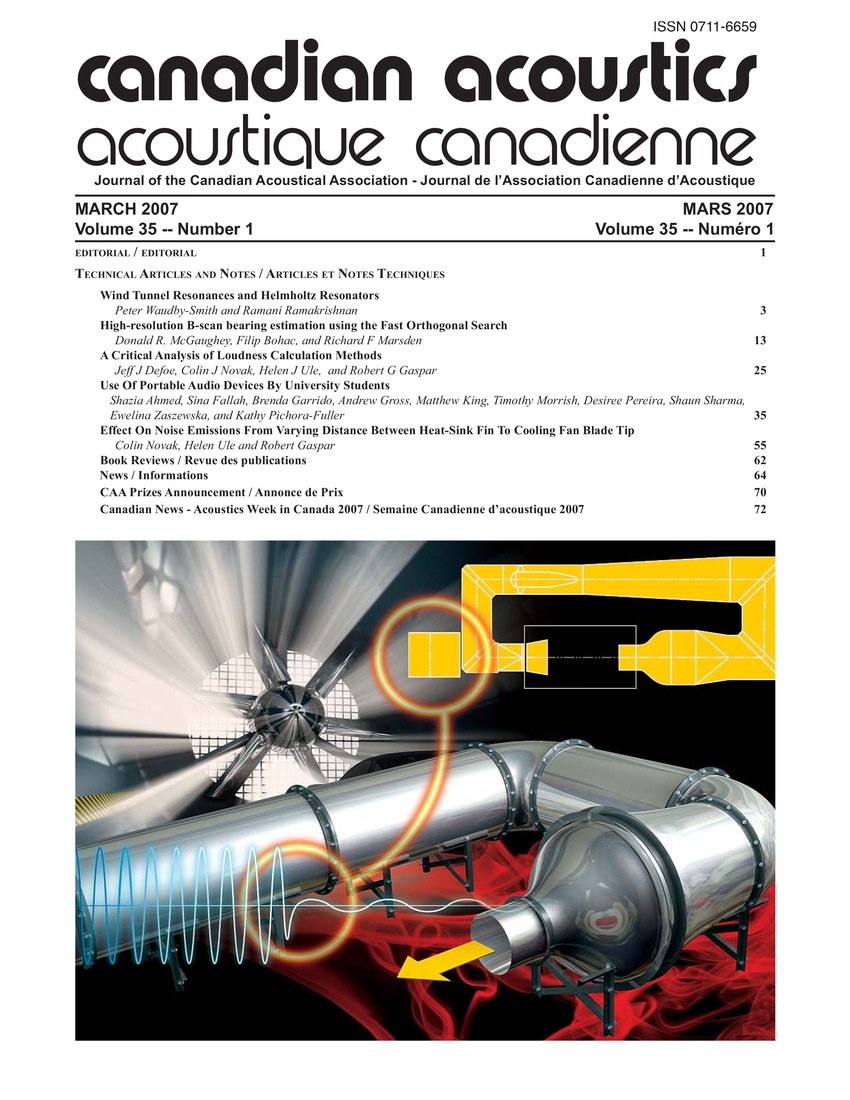Wind tunnel resonances and Helmholtz resonators
Mots-clés :
Computer simulation, Helmholtz equation, Natural frequencies, Pressure effects, Resonators, Vortex flow, Helmholtz resonators, Jet wind tunnels, Pressure fluctuations, Wind speedRésumé
Les souffleries aérodynamiques à veine ouverte peuvent être affectées par diverses fluctuations de basse fréquence dues à différents mécanismes de rétroaction engendrés par la configuration de la veine. De telles fluctuations peuvent même endommager la structure de la soufflerie si de fortes résonances en résultent. Ces fluctuations, réduiront habituellement la qualité de simulation de la soufflerie et/ou réduiront la gamme efficace de vitesse de vent de l’installation. Des recherches considérables ont été conduites pour comprendre le debut de ces fortes fluctuations de pression, ainsi différentes méthodes de réduction ont été tentés pour réduire ces fluctuations. L’idée d’utiliser des résonateurs de Helmholtz pour fournir une forte absorption dans le régime de basse fréquence a été depuis longtemps employé dans différentes applications acoustiques. Cette approche a également été appliquée dans les domaines aéro-acoustique pour contrôler les résonances de cavité. Une étude paramétrique concernant l’utilisation d’un résonateur de Helmholtz pour contrôler les fluctuations de pression dans des souffleries aérodynamiques à veine ouverte a été entreprise. Une soufflerie aérodynamique à veine ouverte existante a été modifiée pour produire de fortes fluctuations de pression à basse fréquence. Un volume de contrôle, représentant un résonateur de Helmholtz a été fixé à la soufflerie. Le volume de contrôle a été rendu réglable pour produire différentes fréquences de mise au point et ainsi contrôler les fluctuations à différentes vitesses de vent. Cet article présente les résultats de l’étude paramétrique.Fichiers supplémentaires
Publié-e
Comment citer
Numéro
Rubrique
Licence
Author Licensing Addendum
This Licensing Addendum ("Addendum") is entered into between the undersigned Author(s) and Canadian Acoustics journal published by the Canadian Acoustical Association (hereinafter referred to as the "Publisher"). The Author(s) and the Publisher agree as follows:
-
Retained Rights: The Author(s) retain(s) the following rights:
- The right to reproduce, distribute, and publicly display the Work on the Author's personal website or the website of the Author's institution.
- The right to use the Work in the Author's teaching activities and presentations.
- The right to include the Work in a compilation for the Author's personal use, not for sale.
-
Grant of License: The Author(s) grant(s) to the Publisher a worldwide exclusive license to publish, reproduce, distribute, and display the Work in Canadian Acoustics and any other formats and media deemed appropriate by the Publisher.
-
Attribution: The Publisher agrees to include proper attribution to the Author(s) in all publications and reproductions of the Work.
-
No Conflict: This Addendum is intended to be in harmony with, and not in conflict with, the terms and conditions of the original agreement entered into between the Author(s) and the Publisher.
-
Copyright Clause: Copyright on articles is held by the Author(s). The corresponding Author has the right to grant on behalf of all Authors and does grant on behalf of all Authors, a worldwide exclusive license to the Publisher and its licensees in perpetuity, in all forms, formats, and media (whether known now or created in the future), including but not limited to the rights to publish, reproduce, distribute, display, store, translate, create adaptations, reprints, include within collections, and create summaries, extracts, and/or abstracts of the Contribution.


